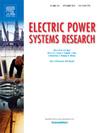Fault recovery method of DC distribution network considering EV charging and discharging and SOP network reconfiguration
IF 3.3
3区 工程技术
Q2 ENGINEERING, ELECTRICAL & ELECTRONIC
引用次数: 0
Abstract
In the post-disaster fault recovery scenario, the decentralized scaled electric vehicles (EV) have considerable discharging potential, coupled with photovoltaic energy storage power supply equipment, which can effectively underpin the re-establishment of power supply for crucial loads within the DC distribution network and cut down power outage losses. This paper puts forward a fault recovery approach for the DC distribution network, which is founded on the charging and discharging of EV as well as the network reconfiguration of soft open points (SOP). To begin with, by leveraging the vehicle-to-grid interaction characteristics of EV, the power model for EV charging and discharging and the discharging response model are formulated. Further considering the regulation of SOP on power flow distribution and the connectivity characteristics of the main network, an SOP model suitable for DC distribution network is established. Next, the island partition model is developed, aiming to optimize the priority restoration of important loads. Based on this, a two - tier fault recovery model is built, taking into account the distribution network system loss, the total voltage deviation, and the income of EV users. The upper-layer model is resolved using the multi-objective particle swarm optimization algorithm to ascertain the optimal discharging power for each discharging station. The lower-layer model is solved by the simulated annealing algorithm to decide the optimal access location for the SOP network reconstruction, so as to obtain the optimal fault recovery scheme. Finally, by taking the modified IEEE 33-node DC distribution network as a case study, the proposed fault recovery method is analyzed and validated. The results show that in the fault recovery process of the DC distribution network with a scaled presence of EV, this approach is capable of not merely satisfying the power-supply restoration of crucial loads, but also guaranteeing the optimal performance in terms of system network loss, total voltage deviation, and the enhancement of EV users' income.
求助全文
约1分钟内获得全文
求助全文
来源期刊

Electric Power Systems Research
工程技术-工程:电子与电气
CiteScore
7.50
自引率
17.90%
发文量
963
审稿时长
3.8 months
期刊介绍:
Electric Power Systems Research is an international medium for the publication of original papers concerned with the generation, transmission, distribution and utilization of electrical energy. The journal aims at presenting important results of work in this field, whether in the form of applied research, development of new procedures or components, orginal application of existing knowledge or new designapproaches. The scope of Electric Power Systems Research is broad, encompassing all aspects of electric power systems. The following list of topics is not intended to be exhaustive, but rather to indicate topics that fall within the journal purview.
• Generation techniques ranging from advances in conventional electromechanical methods, through nuclear power generation, to renewable energy generation.
• Transmission, spanning the broad area from UHV (ac and dc) to network operation and protection, line routing and design.
• Substation work: equipment design, protection and control systems.
• Distribution techniques, equipment development, and smart grids.
• The utilization area from energy efficiency to distributed load levelling techniques.
• Systems studies including control techniques, planning, optimization methods, stability, security assessment and insulation coordination.
 求助内容:
求助内容: 应助结果提醒方式:
应助结果提醒方式:


